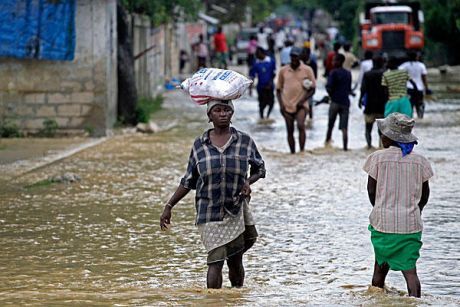News
You are here
Haiti: Sandy's forgotten victims

November 30, 2012
While North American eyes were fixed on the damage done to New York City by hurricane Sandy, the already devastated nation of Haiti suffered far worse.
At least 54 people died from the immediate effects of the storm. That number will be dwarfed by hunger and disease in Sandy’s aftermath. This wasn’t the only weather related disaster to hit Haiti this year. A drought and tropical storm Isaac also hit Haiti’s agricultural sector. The UN World Food Program estimates that more than half of Haiti’s rural population faces “severe food insecurity.”
Hunger and poverty breed disease. In the wake of floods caused by Sandy, overwhelming Haiti’s already inadequate sewage treatment facilities, cholera is running rampant. Medical officials admit that UN “peacekeepers” occupying the country likely introduced the cholera to Haiti.
Even before Sandy, hundreds of thousands of Haitians were still living in makeshift shelters and tents due to the 2010 earthquake that devastated the impoverished country. The hurricane wiped out thousands more buildings and homes.
The earthquakes and hurricanes are “natural disasters”, but the disproportionately high death toll in Haiti is a result of poverty and greed. Building codes are lax and corruption rampant, so buildings collapse and become death traps. And most of the relief money spent in Haiti since 2010 has gone to restore infrastructure for corporate investment and industry, rather than to help Haiti’s poor workers. Agriculture focuses on cash crops for export, leaving Haitians hungry.
Global warming will exacerbate Haiti’s woes. The hypocrisy of the developed industrial powers, expressing concern but refusing to take serious action, will come as no surprise to Haitians.
Section:
- Log in to post comments










